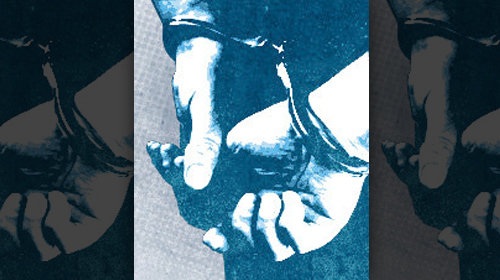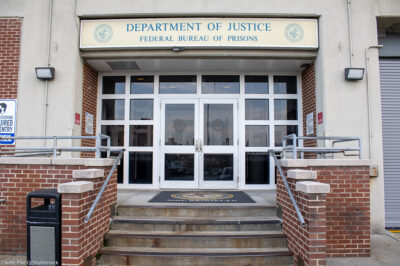
Today, the U.S. has the highest incarceration rate of any country in the world. With over 2.3 million men and women living behind bars, our imprisonment rate is the highest it’s ever been in U.S. history. And yet, our criminal justice system has failed on every count: public safety, fairness and cost-effectiveness. Across the country, the criminal justice reform conversation is heating up. Each week, we feature our some of the most exciting and relevant news in overincarceration discourse that we’ve spotted from the previous week. Check back weekly for our top picks.
Do You Have a Right to Remain Silent If Your Silence Can Be Used Against You?
In 1992, two brothers were shot at a party in Texas. When the police interviewed an acquaintance, Genovevo Salinas, Mr. Salinas refused to answer an incriminating question—whether the shotgun shells at the crime scene would match the gun in his home. In 2007, Mr. Salinas was charged with the two murders. At his first trial, Mr. Salinas’ silence was introduced as evidence of his guilt. The jury was unable to agree on a verdict, and the prosecution ended in a mistrial.
Texas then retried Mr. Salinas, placing far more emphasis on his silence; here’s an excerpt from the prosecution’s closing argument: “You know, if you asked somebody – there is a murder in New York City, is your gun going to match up the murder in New York City?…You are going to say no. An innocent person is going to say: What are you talking about? I didn’t do that. I wasn’t there. He didn’t respond that way. He didn’t say: No, it’s not going to match up….He wouldn’t answer that question.” The second jury found Mr. Salinas guilty and sentenced him to twenty years in prison.
Mr. Salinas’s appeal has now reached the Supreme Court, which will decide whether prearrest, pre-Miranda silence is admissible as substantive evidence of guilt. For more, see coverage at Grits for Breakfast.
Early Returns from South Carolina’s 2010 Sentencing Reform are Promising
In our Smart Reform is Possible report, we praised South Carolina’s 2010 criminal justice reform law, S.1154, as a step in the right direction. That law made a number of significant changes: it eliminated mandatory minimum sentences for possession, eliminated the crack/powder sentencing disparity, and provided non-prison alternatives for some drug sale offenses; the bill also expanded parole eligibility for certain offenses, and allowed people to earn early release from probation through good behavior.
Two years later, those reforms have started to bear fruit. Instead of adding prisoners as projected, South Carolina shed 2,700 prisoners, and the Corrections Department closed two prisons; taxpayers saved $3 million in 2012 alone; and the rate of index crimes (major violent and property crimes) fell almost 10 percent between 2009 and 2011.
Texas’s Big-Business Lobby to Push for Criminal Justice Reform
Mike Ward of the Austin American-Statesman reports that Texas’ most powerful business group, the Texas Association of Business, has decided to prioritize criminal-justice reforms in the upcoming session. The group’s president, Bill Hammond, said they plan to push to increase rehabilitation and community-based corrections programs; to pass drug-sentencing reforms that would place more low-level offenders in local treatment programs and reduce penalties for small amounts of drugs; and to modify modified state licensing laws that keep some released prisoners from ever becoming certified for various trades. “We’re sending too many people to the slammer,” Hammond said. “The taxpayers and the business community are both being harmed.”
Report: Handcuffs on Success: The Extreme School Discipline Crisis in Mississippi Public Schools
In 2000, students throwing peanuts at one another on a school bus were arrested for felony assault. The Sheriff told a newspaper, “This time it was peanuts, the next time it could be bodies.” In 2010, a Holmes County police officer drove a five-year old home because his shoes, which weren’t completely black, violated the dress code. A new report documents the alarming frequency with which Mississippi uses the justice system and out-of-school suspensions to handle minor disciplinary infractions—disproportionately for students of color. The report comes not long after the Department of Justice sued one Mississippi town for “operating what the government calls a school-to-prison pipeline.” The link above takes you to The New York Times’ coverage; you can find the report here.
Radley Balko uses Aaron Swartz’s tragic case to illustrate the vast power of the modern prosecutor. If you’re not familiar with the case, you can read the initial coverage here. Essentially, prosecutors stacked charges against Swartz in order to induce a guilty plea. Because he refused the plea bargain, he faced potential penalties of up to 35 years in prison and $1 million in fines at the time of his suicide. Charge-stacking for the purpose of obtaining a guilty plea is a tactic not unique to Swartz’s case, and prosecutors are given this ability by the lawmakers who have steadilty expanded the now-massive federal criminal code (“innumerable” would be an accurate way to describe federal crimes, since repeated attempts to count them have failed), which often gives prosecutors long lists of charges to file. You can also find a statement by Swartz’s prosecutor, Carmen Ortiz, here.
Learn more about overincarceration: Sign up for breaking news alerts, follow us on Twitter, and like us on Facebook.


